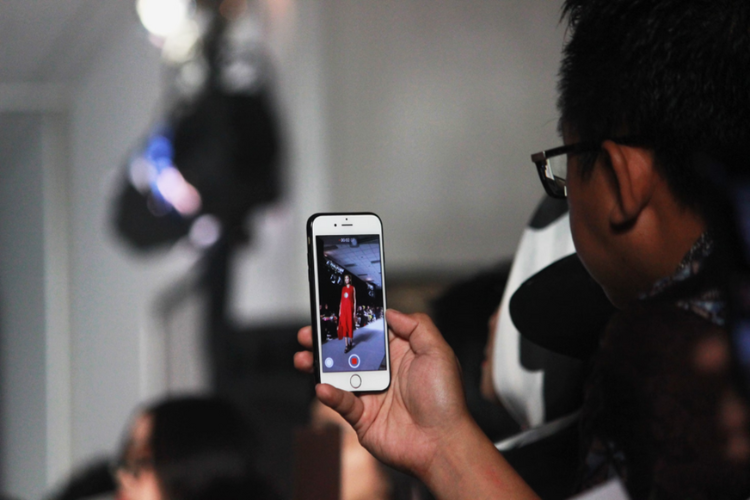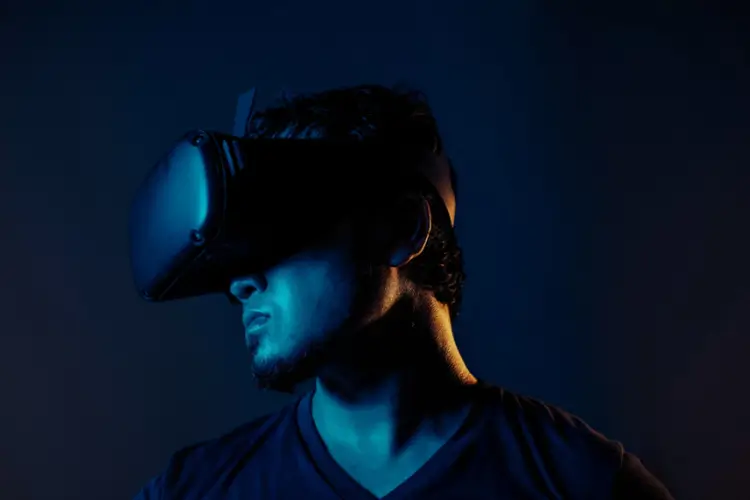The fashion industry, a powerhouse of creativity and innovation, has always been quick to embrace change. The digital revolution, sweeping across every aspect of our lives, has not spared the glamorous world of fashion shows. This transformation is profound, altering not just the medium but the very essence of how fashion is presented, consumed, and experienced. The journey from the tactile allure of physical runways to the boundless possibilities of the digital realm is a narrative of adaptation, creativity, and innovation.
Fashion shows began as intimate affairs, exclusive to the societal elite. Over time, they evolved into grand spectacles, their reach extended by photography and television. Yet, the digital age has ushered in a new era, making these events accessible to anyone with an internet connection. This shift towards digital platforms has democratised access to fashion shows, allowing global participation in these once-exclusive events.
The transition to digital was initially met with scepticism. Could the digital realm replicate the allure and glamour of live fashion shows? The answer, as we’ve seen, is a resounding yes. Early adoption of live-streaming and strategic use of social media platforms have not only preserved the essence of fashion shows but have expanded their reach and impact. This transition was further accelerated by the global pandemic, pushing the industry towards rapid innovation.
From Runways to Screens
The initial foray into digital fashion shows was marked by live streams, a simple yet effective way to reach a global audience. However, as technology advanced, so did the ambitions of fashion brands. The introduction of augmented reality (AR) and 3D modelling has taken digital fashion shows to new heights, offering viewers an immersive experience that rivals, and in some cases, surpasses, the physical event. These technologies have allowed designers to break free from the constraints of the physical world, creating fantastical environments that enhance the storytelling aspect of their collections.
Social media has played a pivotal role in this digital transformation. Platforms like Instagram and Facebook have become virtual front rows, where fashion enthusiasts from around the world can witness the latest trends unfold in real-time. This democratisation of access has not only broadened the audience for fashion shows but has also fostered a more interactive and engaging experience. Viewers are no longer passive spectators; they are active participants, sharing their thoughts and reactions instantaneously.
The impact of this digital shift extends beyond the format of fashion shows. It has also influenced the way fashion brands approach marketing and consumer engagement. Digital platforms offer a wealth of data that can be leveraged to tailor experiences and content to individual preferences, creating a more personalised and meaningful connection with the audience. This data-driven approach has the potential to revolutionise not just fashion shows, but the entire fashion industry.
The Role of Virtual Reality
Among the technologies reshaping fashion shows, virtual reality (VR) stands out for its ability to create deeply immersive experiences. Brands like Balmain have pioneered the use of VR, transporting viewers into meticulously crafted digital worlds that complement and enhance their collections. This level of immersion is not just about visual spectacle; it’s about creating a connection, evoking emotions, and telling a story in a way that was previously unimaginable.
The technology behind these VR experiences is both complex and fascinating. It involves a combination of high-resolution 3D modelling, sophisticated animation, and interactive elements that respond to the viewer’s movements. This creates a sense of presence, making the digital experience feel as real and tangible as attending a physical show. The potential of VR in fashion is not limited to shows; it opens up new avenues for design, collaboration, and even retail.
The impact of VR on audience engagement cannot be overstated. By offering an unparalleled level of immersion, VR experiences have the power to captivate and engage audiences in a way that traditional media cannot. This has significant implications for brand loyalty and consumer behaviour. As VR technology becomes more accessible, we can expect to see more fashion brands embracing this medium, pushing the boundaries of what is possible in the digital realm.
Redefining Engagement
The evolution of digital fashion shows has been accompanied by a shift in how brands engage with their audience. Interactive digital platforms have emerged as powerful tools for fostering a deeper connection with viewers. These platforms offer a range of features, from live chats and polls to behind-the-scenes content, that transform the viewing experience from passive to participatory. This interactivity not only enhances engagement but also provides valuable insights into consumer preferences and behaviour.
One of the key benefits of interactive digital platforms is their ability to create a sense of community. Fashion enthusiasts from around the globe can come together, share their thoughts, and engage in discussions, creating a vibrant and inclusive online community. This sense of belonging is crucial for building brand loyalty and fostering a long-term relationship with the audience.
The success of digital initiatives in the fashion industry is a testament to the power of interactive digital platforms. Brands that have embraced these technologies have seen a significant increase in engagement, reach, and consumer satisfaction. As the digital landscape continues to evolve, we can expect to see more innovative and immersive ways for brands to connect with their audience.
Pioneering Digital Fashion
Alexander McQueen has long been synonymous with innovation, both in design and presentation. The brand’s foray into digital fashion showcases is a prime example of how technology can be harnessed to push the boundaries of creativity. By leveraging digital platforms, Alexander McQueen has not only expanded its reach but has also offered audiences around the world a unique and captivating experience.
The brand’s digital presentations are characterised by their artistic vision and technical prowess. From high-definition streaming to interactive elements, every aspect is meticulously crafted to enhance the viewer’s experience. This attention to detail and commitment to innovation have set a new standard for digital fashion shows, inspiring other brands to explore the possibilities of the digital realm.
Alexander McQueen’s approach to digital fashion is not just about showcasing collections; it’s about storytelling. Through the use of digital platforms, the brand has been able to convey the inspiration, craftsmanship, and emotion behind each collection in a way that resonates with viewers. This immersive approach has redefined what a fashion show can be, turning it into a multisensory experience that engages and inspires.
A Case Study in Digital Luxury Fashion
In the landscape of digital luxury fashion, Cosette has a unique approach to online retail. By leveraging the overstock of luxury brands, including coveted items like the YSL crossbody bag and Bottega Veneta bag, Cosette offers consumers access to high-end products at discounted prices, without compromising the prestige of the brands involved. This model not only provides value to customers but also addresses the issue of sustainability by reducing the need for new production, making luxury bags more accessible and environmentally conscious.
Cosette’s commitment to digital innovation is evident in its online shopping experience. The brand offers a seamless and secure platform, with a variety of payment options and express shipping, ensuring a premium experience for customers. This focus on customer satisfaction, combined with a curated selection of luxury items, has positioned Cosette as a leader in the digital luxury market.
The brand’s approach to sustainability is particularly noteworthy. By selling excess inventory from luxury brands, Cosette helps to reduce the environmental impact associated with overproduction and excess stock disposal. This commitment to sustainable fashion aligns with the growing consumer demand for more responsible and conscious consumption, making Cosette a model for other retailers in the digital age.
How Digital Shows Democratise Fashion
The shift to digital fashion shows has had a profound impact on accessibility. No longer confined to a select few who can attend in person, these events are now open to a global audience. This democratisation of fashion has broken down geographical and economic barriers, allowing anyone with an internet connection to experience the glamour and creativity of the world’s top designers.
This increased accessibility has significant implications for the fashion industry. It has opened up new markets and audiences, providing brands with the opportunity to reach consumers they may have previously overlooked. Moreover, it has fostered a more inclusive and diverse fashion community, where voices from around the world can be heard and celebrated.
The move to digital platforms has also provided an opportunity for emerging designers and smaller brands. Without the need for a physical venue and the associated costs, these designers can showcase their work to a global audience, levelling the playing field and providing a platform for innovation and diversity in the fashion industry.
Sustainability in the Digital Fashion Era
The digital transformation of fashion shows is not just about innovation and accessibility; it also has a significant impact on sustainability. By reducing the need for physical events, the industry can significantly lower its carbon footprint. The decrease in travel, production of samples, and the use of physical venues all contribute to a more sustainable approach to fashion presentations.
Digital innovations, such as 3D modelling and virtual reality, also offer opportunities for more sustainable consumption patterns. These technologies can reduce the need for physical samples and prototypes, minimising waste and resource use. Furthermore, the ability to visualise and customise products digitally can lead to more thoughtful and deliberate purchasing decisions, reducing the impulse buys that contribute to overconsumption.
The environmental benefits of digital fashion shows are a compelling argument for their continued adoption. As the industry grapples with its impact on the planet, the move towards digital presentations offers a path to a more sustainable future. This shift aligns with the growing consumer demand for responsible and eco-friendly practices, making it a win-win for both the industry and the environment.
The Future of Fashion in the Digital Realm
As we look to the future, the integration of digital and physical experiences in fashion presents both challenges and opportunities. Emerging trends, such as the metaverse and digital twins, offer exciting possibilities for the evolution of fashion shows. These technologies have the potential to create even more immersive and interactive experiences, blurring the lines between the digital and physical worlds.
However, the successful integration of these experiences will require careful consideration of the audience’s needs and preferences. The challenge will be to maintain the magic and allure of fashion shows while leveraging the benefits of digital technology. This balance will be key to engaging and captivating audiences in the years to come.
The future of fashion in the digital realm is bright, with endless possibilities for innovation and creativity. As technology continues to evolve, so too will the ways in which we experience and engage with fashion. The journey from the runway to the screen has only just begun, and it promises to be an exciting and transformative one.


